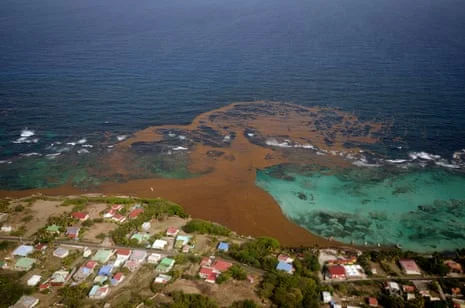
Toxic Seaweed Threatens Florida’s Coastline
Florida's coastline is facing a new environmental challenge as a massive bloom of toxic seaweed, known as sargassum, continues to spread across the Atlantic Ocean. According to recent reports, this seaweed, which can release harmful gases as it decomposes, is expected to wash ashore in unprecedented quantities in the coming months, posing significant threats to both the environment and local economies.
The sargassum bloom, which has been tracked by satellite imagery, is part of a larger phenomenon that has been growing in size and frequency over the past decade. Scientists attribute the increase to a combination of factors, including warmer ocean temperatures and nutrient runoff from agricultural and urban areas. As the seaweed decomposes on the beaches, it releases hydrogen sulfide, a gas that can cause respiratory issues and other health problems for humans and wildlife.
Local authorities in Florida are preparing for the arrival of the sargassum by organizing cleanup efforts and issuing public health warnings. The economic impact of the seaweed invasion could be significant, as it threatens to deter tourists and disrupt fishing and boating activities. In response, researchers are studying ways to mitigate the effects of the sargassum bloom, including potential uses for the seaweed in agriculture and biofuel production.
The situation in Florida underscores the broader challenges posed by climate change and ocean pollution, highlighting the need for coordinated action to protect coastal ecosystems and communities.